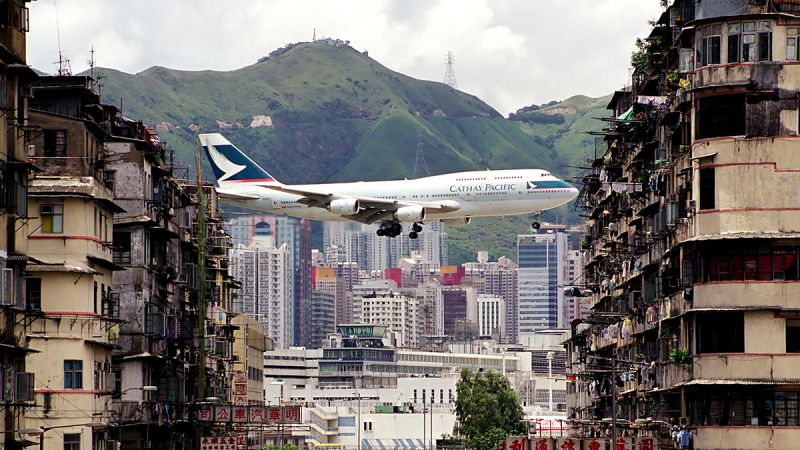Editor’s Note: Monthly Ticket is a CNN Travel series that highlights some of the most fascinating topics in the travel world. In June, we’re looking to the skies as we spotlight the exciting world of aviation.
CNN
—
“Goodbye, Kai Tak, and thank you.”
It’s been 25 years since Richard Siegel, Hong Kong’s then-director of civil aviation, bid farewell and turned off the lights at Hong Kong Kai Tak International Airport.
On July 6, 1998, the city’s main air hub closed its doors, moving services to the bigger and swankier new Hong Kong International Airport in Chek Lap Kok.
The retired facility was rechristened as Kai Tak Cruise Terminal, the largest cruise terminal in town, in 2013.
The 25-year-old “new” airport has pulled off numerous achievements – it’s frequently named one of the top five airports in the world. It’s a repeat winner of Skytrax’s World’s Best Airport Dining award. It’s been the world’s largest cargo airport every year since 2010, except for 2020.
Yet fond memories remain for those who had a chance to fly through the old Kai Tak, or simply witness the remarkable airplane landings that made it famous.
Before its closure in 1998, Kai Tak (the first recorded flight from the site took place in 1925) was regarded as one of the most difficult airports in the world for pilots to fly in and out of.
As it sat in the middle of Kowloon City, with a runway protruding into the sea, landing in Kai Tak was a hair-raising event even for experienced pilots.
Former Cathay Pacific Airways’ general manager of operations and now-pilot instructor Russell Davie has more than 30 years of flying experience.
He remembers Kai Tak fondly.
“As a pilot, it was totally unique. It was the only major airport in the world that required a 45-degree turn below 500 feet to line up with the runway, literally flying between the high-rise buildings, passing close to the famous orange and white Checkerboard Hill (also known as Kowloon Tsai Hill) as you made that final turn toward the runway,” he told CNN Travel.
Daryl Chapman, a teacher and aviation photographer from Britain who has lived in Hong Kong since 1987, spent countless hours photographing the amazing scenes of large aircraft swooping in over the Hong…
Click Here to Read the Full Original Article at CNN.com – RSS Channel – Travel…
